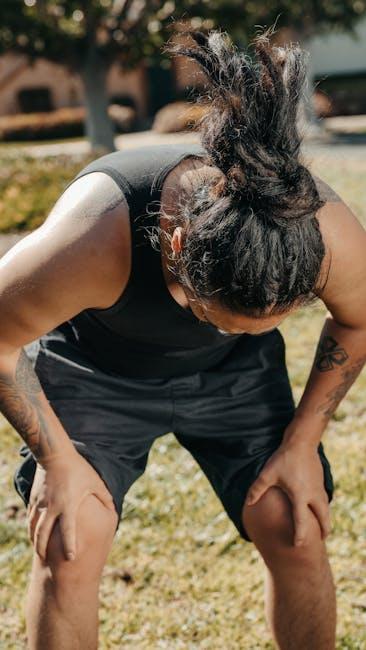As a beloved activity for countless dogs and their owners, fetch has long been celebrated as a source of joy, exercise, and bonding. Watching your furry friend dash across the park with unbridled enthusiasm can be one of the most rewarding experiences of pet ownership. However, beneath the surface of this seemingly harmless game, concerns about the impact of fetch on a dog’s joints have started to emerge. In this article, we’ll explore the potential risks associated with this popular pastime, offering insights and guidance to ensure that your canine companion remains healthy and happy. Whether you’re a seasoned dog owner or new to the joys of fetch, our aim is to provide you with the knowledge needed to make informed decisions about your pet’s well-being.
Understanding the Impact of Fetch on Canine Joint Health
Playing fetch is a beloved activity for many dogs and their owners, but it’s important to consider how this high-impact exercise can affect your furry friend’s joint health. While chasing after a ball or frisbee can provide excellent physical and mental stimulation, it can also lead to joint stress, especially in certain breeds or older dogs. The repetitive motion and sudden stops involved in fetch can exacerbate existing joint issues or contribute to the development of new ones. It’s crucial to be mindful of your dog’s physical capabilities and to observe any signs of discomfort or limping.
- Age and Breed: Puppies and senior dogs, as well as breeds prone to hip dysplasia or arthritis, may require modified fetch routines.
- Surface Consideration: Opt for softer surfaces like grass or sand to reduce impact.
- Warm-up and Cool Down: Incorporate stretching and gentle exercises before and after play sessions.
- Monitor Duration: Keep fetch sessions short and sweet to avoid overexertion.
By being aware of these factors, you can help ensure that your dog’s love for fetch remains a safe and joyful experience.

Recognizing the Signs of Joint Strain in Your Dog
Understanding when your dog might be experiencing joint strain is crucial for their overall well-being. While dogs can’t verbally communicate their discomfort, they do exhibit certain signs that can help you identify potential issues. Look out for changes in your dog’s behavior, such as reluctance to engage in activities they once loved, like playing fetch. If your furry friend seems hesitant or is moving more slowly than usual, it might be an indication of joint discomfort.
- Limping or favoring one leg
- Difficulty in getting up or lying down
- Swelling around the joints
- Decreased activity or stamina
- Whining or showing signs of pain during movement
Being attentive to these signals allows you to take early action, such as adjusting their play routine or consulting with a veterinarian. By doing so, you can help ensure your dog’s joints remain healthy and their playful spirit stays intact.

Choosing Safer Fetch Techniques for Your Furry Friend
When it comes to playing fetch with your beloved canine companion, it’s essential to consider techniques that prioritize their joint health. Opt for softer toys like rubber balls or plush toys instead of hard ones. These are gentler on your dog’s teeth and reduce the impact on their joints when they catch or retrieve them. Vary the terrain where you play fetch; soft grass or sandy beaches are much kinder to your dog’s joints than hard surfaces like concrete or gravel.
- Use shorter throws to reduce the strain on your dog’s joints.
- Incorporate warm-up exercises before starting a fetch session to prepare their muscles and joints.
- Limit the duration of fetch games, ensuring your dog has plenty of rest periods.
- Consult your veterinarian for personalized advice, especially if your dog is prone to joint issues.
Remember, the goal is to have fun while keeping your furry friend safe and healthy. By being mindful of these techniques, you can enjoy countless joyful fetch sessions without compromising their well-being.

Expert Tips for Protecting Your Dogs Joints During Playtime
When it comes to ensuring your furry friend’s joints stay healthy during playtime, a few expert tips can make all the difference. Choose softer surfaces like grass or dirt for fetch sessions, as they provide a gentler landing for your dog’s joints compared to hard pavements. Additionally, vary the types of play. Instead of sticking to high-impact activities like fetch, incorporate low-impact exercises such as swimming or gentle tug-of-war to give those joints a break.
- Warm up before play: Just like humans, dogs benefit from a warm-up. Start with a short walk or gentle play to prepare their muscles and joints.
- Monitor your dog’s weight: Keeping your dog at a healthy weight reduces unnecessary strain on their joints, especially during active play.
- Use appropriate toys: Opt for toys that encourage gentle fetching and don’t require sudden stops or jumps.
- Schedule regular vet check-ups: Early detection of joint issues can lead to more effective management and treatment.
By integrating these tips into your routine, you can help safeguard your dog’s joints and ensure they enjoy a long, happy, and playful life.

